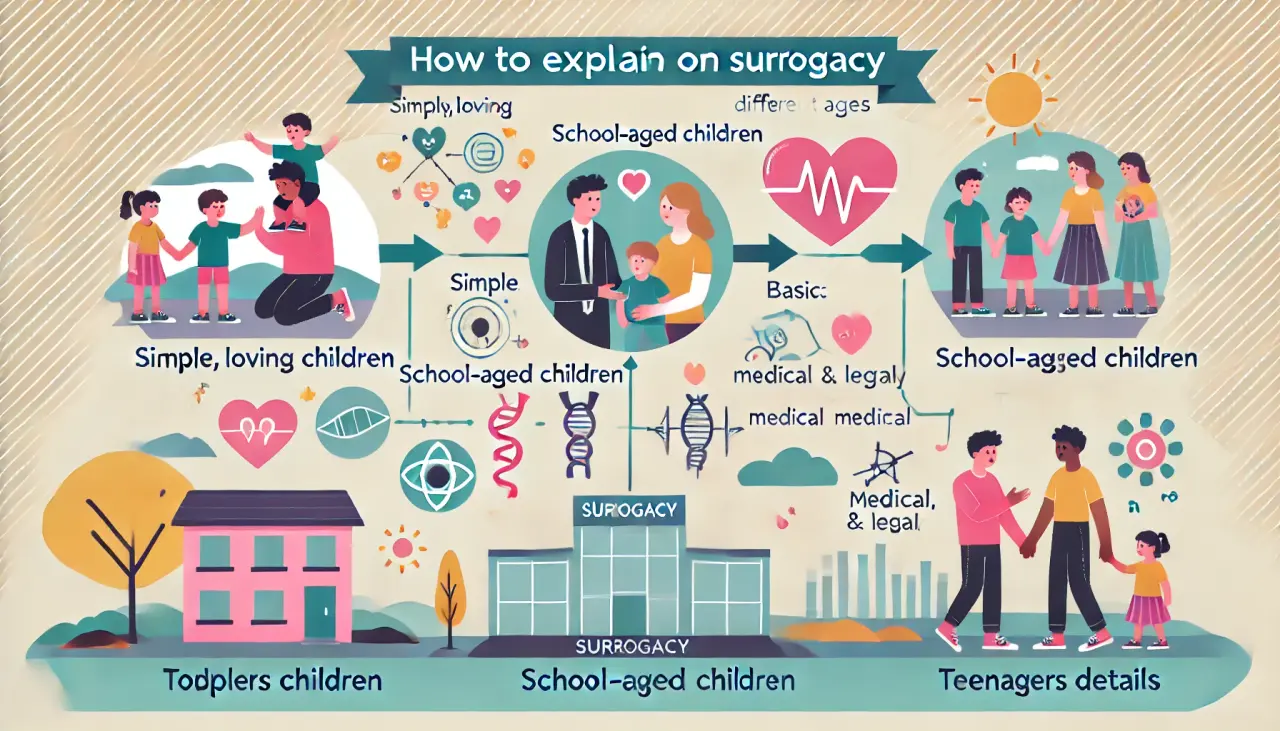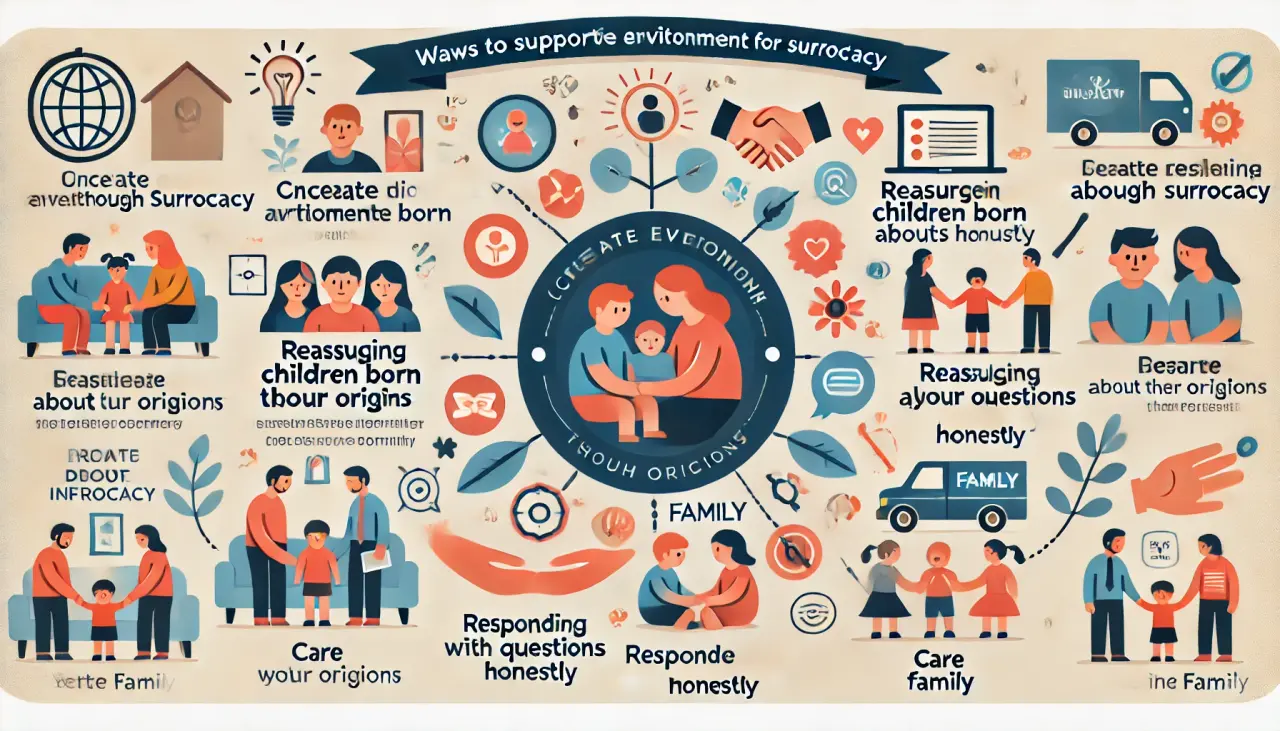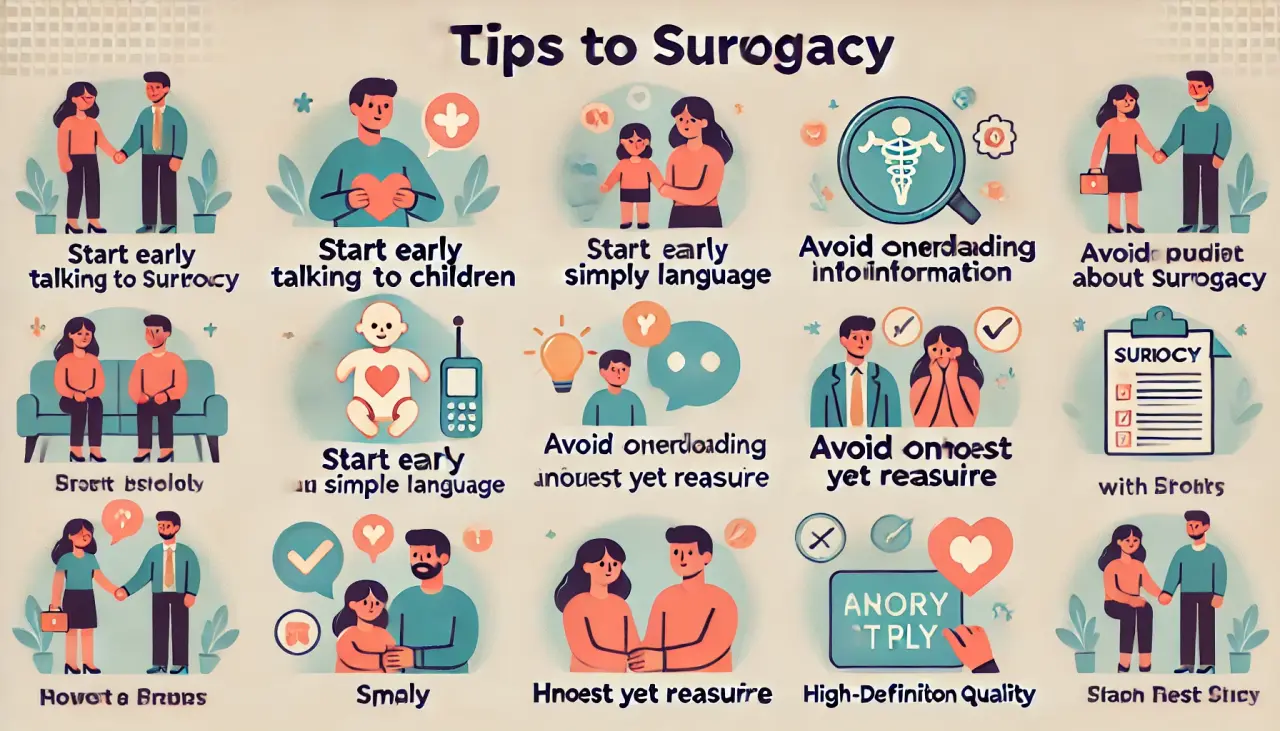
Talking to Children About Surrogacy: How to Explain Surrogacy to Kids at Different Ages
Talking to children about surrogacy can be a sensitive yet essential conversation for families with a child born through surrogacy. Understanding how to explain surrogacy to a child at different ages is crucial for ensuring the child feels secure, loved, and informed. In this article, we explore the best practices for talking to children about surrogacy, as well as how parents can approach this topic in an age-appropriate way.
1. Why Should Parents Talk to Children About Surrogacy?
A child born through surrogacy might eventually learn that they were not conceived in the traditional manner. This discovery often comes at different stages of their life, depending on how open the family is about surrogacy. Understanding surrogacy explanation for kids is crucial because it promotes trust, transparency, and an understanding of the child’s unique origins. By addressing the topic early and in a gentle way, parents can avoid confusion or misunderstandings later in the child’s life.

2. Age-Appropriate Discussions: How to Explain Surrogacy to a Child at Different Ages
The key to talking to children about surrogacy is adjusting the explanation to be appropriate for the child’s developmental stage. Children of different ages will grasp the concept of surrogacy differently, so it’s important to tailor the conversation accordingly:
- For Toddlers and Young Children: At this stage, children need a very basic and simple explanation. Parents can say something like, “When Mommy and Daddy needed help to have you, a special lady helped carry you in her tummy until you were born.” Focus on the loving aspect and avoid overwhelming details.
- For School-Aged Children: At this stage, kids can begin to understand more. Parents can expand on the concept, explaining that the surrogate was someone who helped bring the child into the world, but the child’s biological parents provided the genetic material. It’s important to keep the explanation clear and non-threatening.
- For Teenagers: Teenagers are capable of understanding the more complex details of surrogacy. Parents can discuss the process in greater depth, including the emotional and legal aspects. Teenagers might be curious about the medical procedures, the role of the surrogate, and how surrogacy differs from natural conception.
The goal is always to keep the conversation honest but also age-appropriate, allowing the child to feel comfortable and secure with their knowledge.

3. Communication and Support: Creating an Open, Supportive Environment
A major part of talking to children about surrogacy is fostering an environment where they feel comfortable asking questions. Parents should aim to keep the conversation open-ended, allowing the child to ask questions and express their feelings. Creating a supportive environment where the child feels safe is essential for a positive outcome.
- Encouraging Open Dialogue: Encourage children to talk about their feelings or any questions they have, whether they are three or thirteen. Offering reassurance that surrogacy is a beautiful way that they came into the world can help children feel loved and understood.
- Reassurance: Children may have worries or confusion about their identity. It’s essential to offer them reassurance and let them know that they are cherished, no matter how they were conceived.
4. Social Context: External Influences and How They Can Impact the Conversation
As children grow older, they may come across surrogacy in media, on TV, or in discussions with friends. This external exposure can lead to questions and sometimes confusion. Parents should be prepared to answer questions that may arise from these encounters. It’s helpful for parents to provide an understanding of surrogacy explanation for kids in a way that aligns with the family’s values and approach to surrogacy.
If children learn about surrogacy from sources outside their family, parents should be ready to explain the concept in their own terms and reinforce the family’s unique experience with love and respect.

5. The Importance of Personal Identity and Understanding One’s Origins
A child’s curiosity about their origins is natural as they develop a sense of self. At certain points in their life, children may ask about how they came into the world. For children born through surrogacy, it’s important to address this curiosity openly.
- The Role of the Surrogate: Whether the child is asking about the surrogate’s role or their own biological origins, explaining the surrogate’s contribution to their birth can help children understand and accept their unique story.
- Instilling Pride in Their Story: Helping children see surrogacy as a loving, wonderful way to bring them into the world can positively influence their self-esteem and personal identity. Children who grow up understanding their unique origins are more likely to feel empowered and confident in their story.

6. Practical Tips for Talking to Children About Surrogacy
Here are a few tips for talking to children about surrogacy in a way that promotes understanding and openness:
- Start Early: The earlier you begin explaining surrogacy, the more natural it will feel as the child grows older.
- Use Simple Language: When children are young, use words and metaphors that are easy for them to understand.
- Avoid Overloading with Information: Children don’t need all the details at once. Share information as they grow older and can handle more complex concepts.
- Be Honest but Reassuring: Always answer questions honestly, but provide reassurance that surrogacy is just one of the many beautiful ways a family can come together.
7. Conclusion: Fostering Understanding and Acceptance
Talking to children about surrogacy can be a deeply rewarding experience that builds trust, transparency, and emotional well-being. By explaining surrogacy in an age-appropriate way and creating a supportive environment, parents can help their children understand their unique story with pride and acceptance. The surrogacy explanation for kids will differ depending on the child’s age, but the underlying message of love and care remains the same.